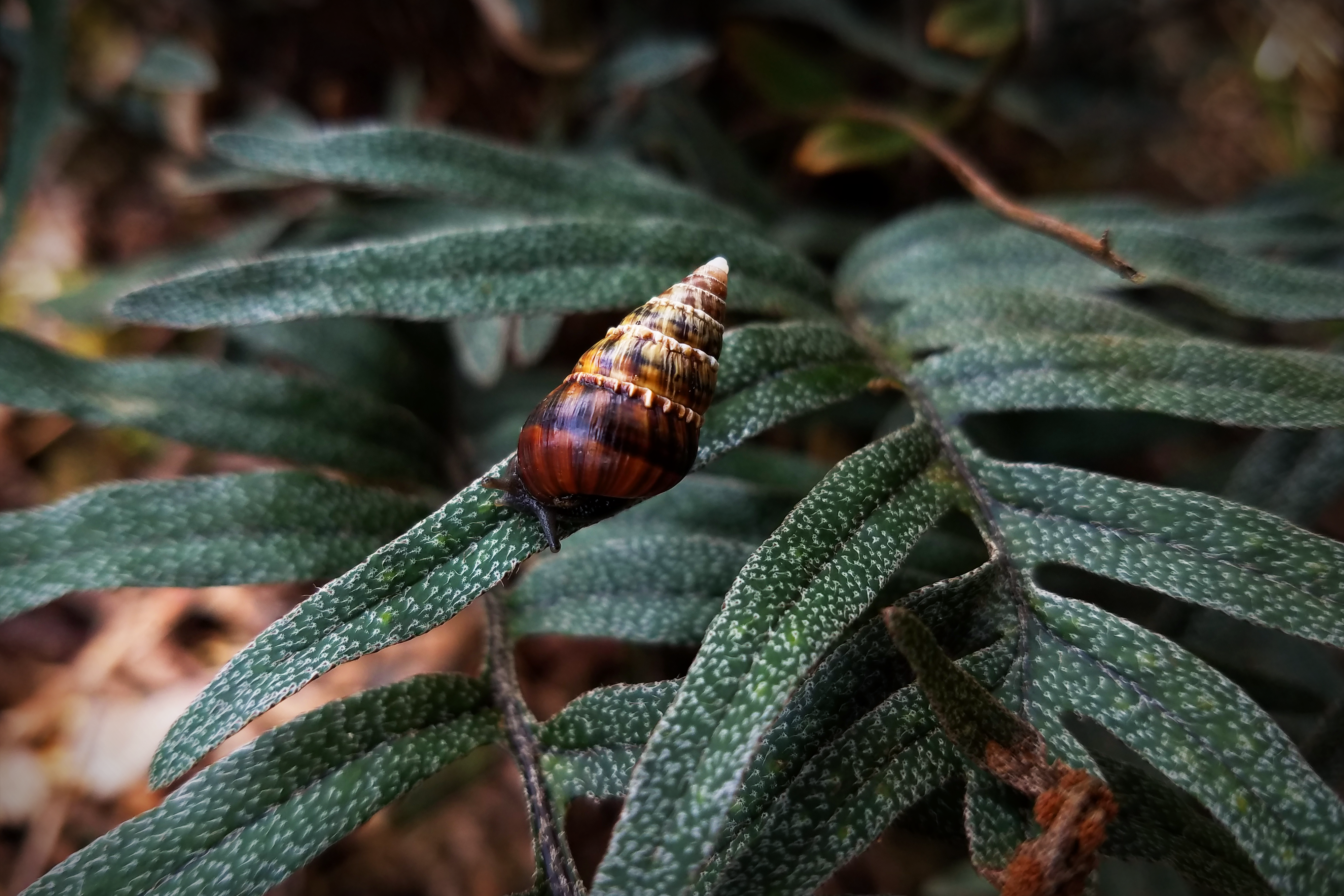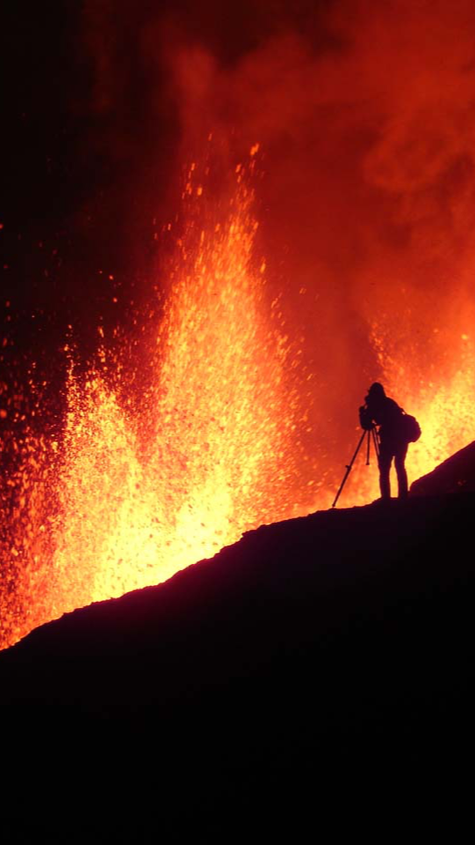Climate Change in a Galápagos Snail Shell
January 13, 2023
The dry season on the Galápagos Islands is normally characterized by a still mist called “garúa†that hangs in the air and clings in droplets to the sides of volcanoes. This mist is part of the life-force of the island, allowing a robust ecosystem to exist on these oceanic, desert islands. But as climate change sweeps across the pristine islands, garúa is slowly becoming a rarity, threatening the existence of this iconic ecosystem.
Although climate scientists are good at measuring the current flow of water through an ecosystem, it’s difficult to measure how fast the mist is disappearing. For that, they would have to go back in time – or ask a biologist if they can borrow a snail shell.
When a snail builds its shell, it collects oxygen from its environment and combines it to form calcium carbonate. Where they collect oxygen from is meaningful to climate scientists – whether it’s underground freshwater or surrounding mist. This has the potential to reveal climatic conditions when the shells were built. During the islands’ approximately five-million-year lifespan, snails leave their shells behind as an intellectual goldmine for researchers like Biology Associate Professor Christine Parent of the University of Idaho, who focuses her life’s work on the tiny, endangered land snails.
First inspired by the islands when she was eighteen, Parent narrowed her research focus to endemic land snails in her Ph.D. and post-doctoral work. After years of specialization, she realized the need for a broader, interdisciplinary vantage point on the Galápagos ecosystem.
She teamed up with Geology Associate Professor Eric Mittelstaedt at the U of I and Lucinda Lawson of the University of Cincinnati who each brought their own disciplines and skills to their vision of bringing together biologists, geologists and climate scientists to elevate Galápagos research. In October 2021, they received Grant No. 2114466 from the National Science Foundation to form the Island Systems Integration Consortium (ISIC), a research network now working together to solve problems like the disappearing mist.
If the network hadn’t brought together biologists and climate scientists into the same room at the recent All Hands Meeting in August, the scientists probably wouldn’t have assembled and planned to use a technique called carbon isotope dating on snail shells to understand the flow of oxygen on the island at the time the shell was dropped potentially hundreds of years ago (and hence track climate change).
Biologists, climate scientists, and geologists all have profound interests in the Galápagos Islands for their own reasons; be it for the unique geologic processes that created this island archipelago or the out-sized global climate impacts that they have because of their position exactly in the path of equatorial circulatory currents. But too often, the three disciplines do not work together to ask big questions about the history and dynamics of the islands. ISIC provides built-in connections so scientists can easily connect with colleagues from other fields to combine their research methods and answer novel questions.
 Geologists have been intensely gathering and dating rocks on the islands for sixty years, but it’s impossible to get information about what the landscape looked like millions of years ago without information from biologists. “Without new data, or maybe new ways of looking at the question, we can’t say anything more than a vague idea of how the islands were made,†says Mittelstaedt.
Geologists have been intensely gathering and dating rocks on the islands for sixty years, but it’s impossible to get information about what the landscape looked like millions of years ago without information from biologists. “Without new data, or maybe new ways of looking at the question, we can’t say anything more than a vague idea of how the islands were made,†says Mittelstaedt.
Interdisciplinary research like this goes beyond the Galápagos. On an island, “It’s much easier [to study complex biological processes] because everything starts from a blank slate,†says Parent. It’s a “blank slate†because we know when the islands rose above sea level as their own isolated biological system. When the system is simple, we can learn how it works and apply it to other, more complex systems in the mainland United States.
It can often feel like the Galapagos is an elite place to study. It’s expensive, and data on the islands is not easily accessible. “We are trying to make it more open as a popular source of information in terms of understanding how our world works,†Parent describes. This understanding needs to encompass not just interactions among organisms and the environment, but also our own impact.
The reality of sustainability is most evident on an island, where the whole ecosystem might collapse if the inhabitants don’t conserve their resources. By working collaboratively with island natives, ISIC participants can learn from them and teach them about the unique ecological interactions on their land. The Consortium is thinking beyond publishing results in scientific journals – they are building an online, interactive storymap geared towards younger kids. “It’s about, in the long term, building an educated, STEM-focused workforce,†says Mittelstaedt.
Their vision is becoming realized as the number of researchers in the network grows. Their first meeting brought together 20 researchers, and their most recent meeting at the University of Cincinnati brought together 77 people across countries and disciplines.
As researchers combine forces to construct a more comprehensive picture of the changing ecosystem on the Galápagos, their contributions extend far beyond the islands. They are revolutionizing how science is performed. By using methods such as carbon isotope on snail shells, they create new, discipline-blending methods. To land an even greater impact, they are also making the island research accessible to people everywhere.
Interested in learning more? Visit galapagosnetwork.org.
Article by Kelsey Swenson,
IIDS Scientific Writing Intern